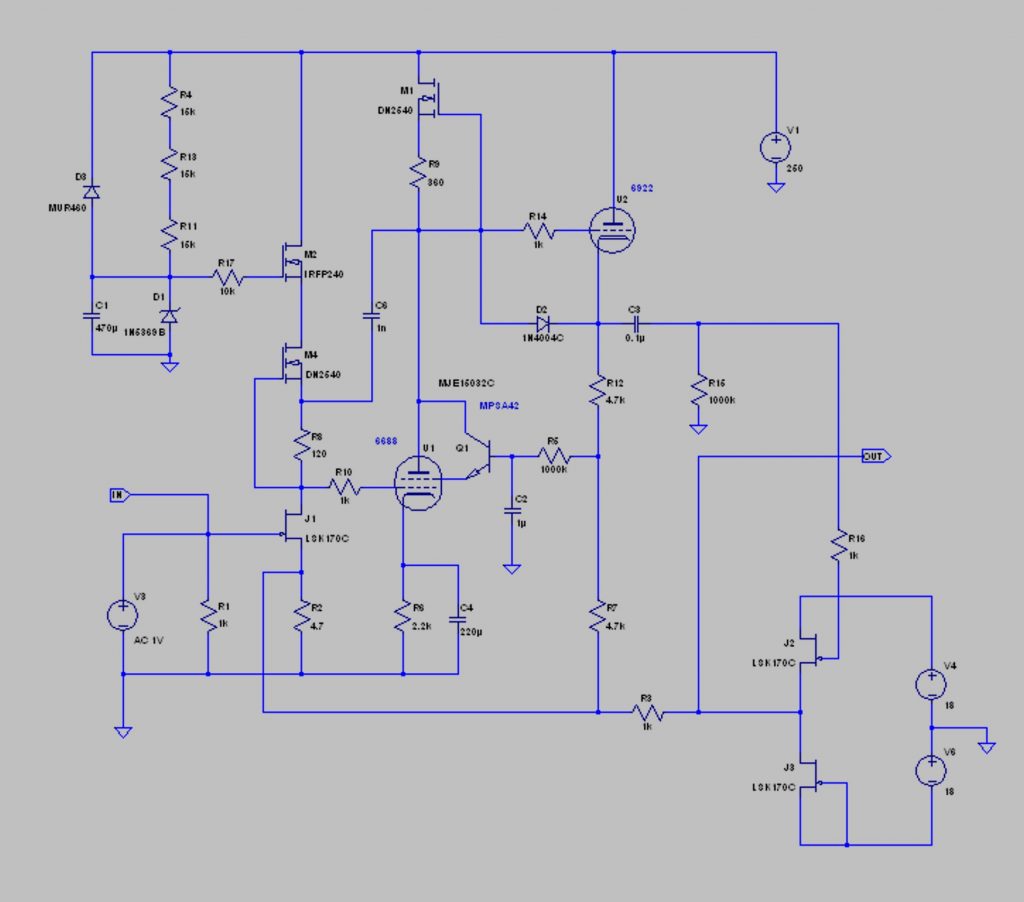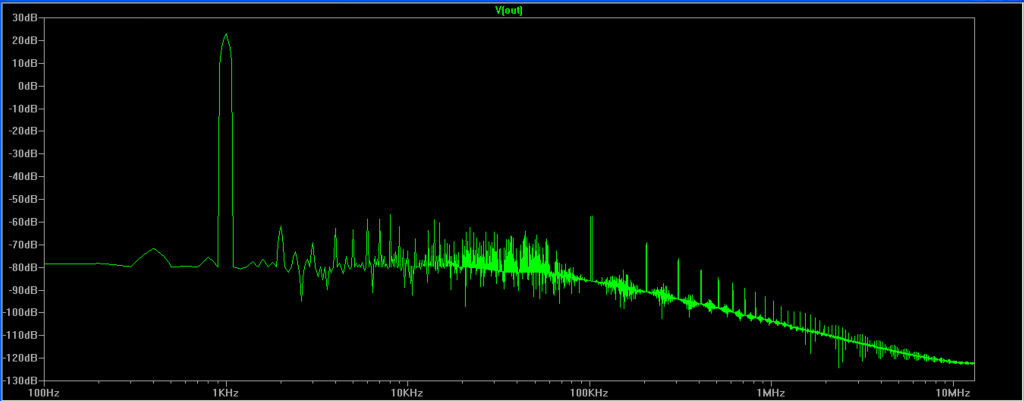
just a quick hit. it’s an interesting technique to combine current and voltage feedback… although as the gain gets high, it can go a little whackamole. compensating those circuits is always a bit of work. but here is a direct coupled fb pair that works splendid for front ends for small signal work: phono…. MC without a transformer, or a ribbon mic front end. the gain can be easily switched between +60 and +40 dB just by shunting R3… 4.7K to 470 ohms, for example. the distortion is very very low and the current source loading shields the signal from the power supply.
pops and clicks headroom will be limited by the power supply of the feedback buffer. here is +/- 18V. a higher voltage buffer is recommended for the best performance, but this is pretty best, just saying. 30mV peak to peak input will deliver 40 V (!) peak to peak output with +/-24 VDC supplies for the buffer at 0.02% THD. so pops and clicks for MC or ribbon mic pops are pretty much irrelevant. just saying. you will clip the fuck out of the gear downstream before you clip this stage!

this arrangement of 2 gain stages with a buffer and direct coupled current feedback to the first stage is a classic solution. Danish B+K used 12AT7s in a similar way in their 1960’s tubed measurement mic preamps. but finesse can be added with some cap coupled nfb also back to the same place. how are they different? excellent question! however, before i even go there, i would like to draw your attention to C6. that little cap makes all the difference in the world, in this circuit. the gain of the 6688 – E180F transconductance stage is about +65 dB open loop. the 2SK170 with a constant current load is also quite a bit of gain, roughly the same as the pentode. but the current feedback from the 6922 buffer back to the JFET does away with quite a bit of that gain, but becomes gain at some high frequency when the phase turns around. which makes this circuit a really efficient oscillator!
C6 adds a 6dB/octave roll well before the phase turns… but in combination with the little extra negative feedback from R3, two things happen: the output impedance goes from very high (current feedback raises Z) to lower (nfb lowers Z) and the phase shift at higher frequencies is changing with amplitude so the amp becomes even more stable. the buffer is in the feedback loop so it’s Z is lowered even more.

compare the above sweep with the below, which is minus the compensation and nfb.

my buffer is well behaved because of the C in of the long channel JFET structure. a fast opamp buffer will aggravate high frequency performance and probably make things harder to compensate? a good stable buffer for the voltage feedback is really key to getting this to work. but when it works, it works scary good.
an obvious next step is an LCR RIAA filter! i would use a 3K impedance… or Slagle’s 7.5K version. all simple cap values. a touch of make up gain to follow and you have a world class phono pre without needing a tranny.
i’ll be back with more soon.